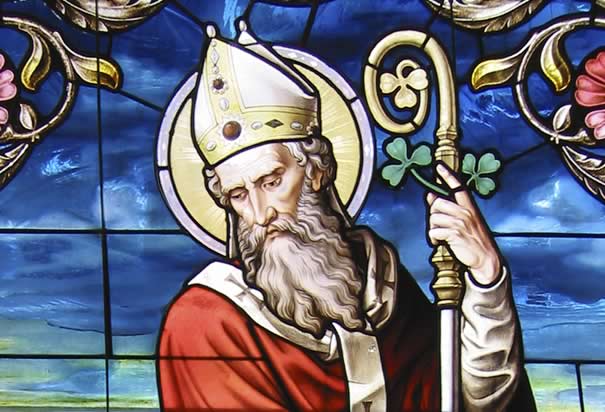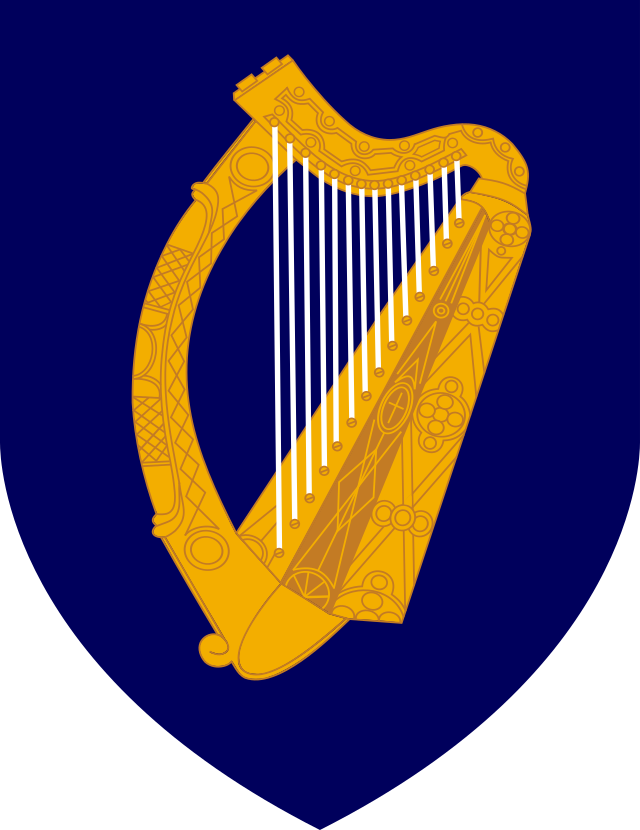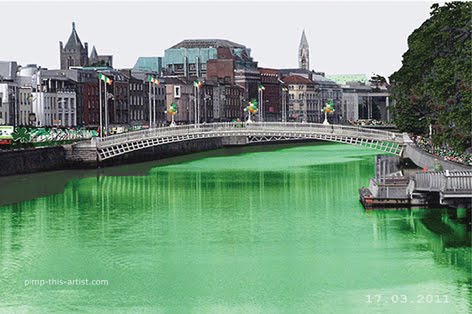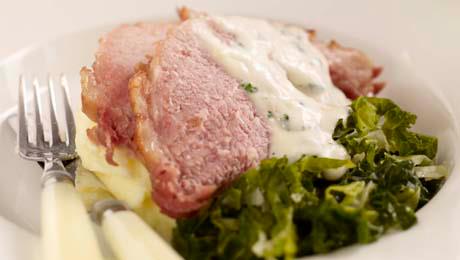 With St Patrick's Day looming before us, there are a few things you'll need to know to celebrate:
With St Patrick's Day looming before us, there are a few things you'll need to know to celebrate:First - It's called Paddy's Day or St Paddy's Day if you're going to give the saint a nickname. Patty is a girl's name and does not stem from Patrick. Paddy comes from the Irish for Patrick...Padraig, which is pronounced pawd-rig.
Also - Corned beef is an American creation. It's not been until recent years you'd see it in Ireland. In Ireland, it has always bacon, which is a special cut of ham, or from the loin, that was cured for preserving and brought out for holidays.
When the Irish went to America, pork wasn't a great commodity so it was very expensive. They turned to a cheaper alternative of cured beef which was suggested by their Jewish neighbors who'd been curing beef for centuries!
As it turns out, Patrick was probably Welsh. He was taken prisoner as a very young man but escaped and came to Ireland to spread Christianity. Ireland's true patron saint should have been Brigit, aka Brigit of Kildare. She founded a monastery there (much of which still stands), and worked beside Patrick and guides him around parts of Ireland where they both spread the word of God.
Ireland has THREE patron saints -- Patrick, Brigit, and Columcille, all of whom are interred in Downpatrick. County Down.
 Green...everyone's wearing green on St Patrick's Day. But did you know that green is NOT the national color of Ireland? The official color is *blue*.
Green...everyone's wearing green on St Patrick's Day. But did you know that green is NOT the national color of Ireland? The official color is *blue*.Here's the official Irish Coat of Arms which appears on all Irish government documents.
Swilling Guinness...These days, St Patrick's Day isn't complete without a pint or three of the black stuff. But did you know, that as a holy day, St Patrick's Day was originally dry? Just like Good Friday and Christmas.
St Patrick's Day was originally a holy day, where people visited churches for masses and prayers. Today's famous parades held all over the world are an American invention, boosted by the Irish expats as a way to remember the auld sod.
This practice dates back to the very first St Patrick's Day Parade in 1732 in Boston, then again in New York City by a growing Irish population nearly 30 years later, in 1762.
Ireland started hosting parades for American tourists who started coming to Ireland on holidays around the 1970s, and festivities grew exponentially to what we see today, with city center Dublin closed for several days around the 17th, including street entertainment, food, music, carnival rides, and throngs of people gathering from all over the world. And of course, the massive parade on the 17th.
Did Patrick banish snakes from Ireland? Well, it depends on your interpretation of 'snakes.' Ireland has never had those cute little slithery creatures called snakes. It's simply too cold, and they never made it over the ice bridge before the thaw. While there are domestic snakes today, which have been brought in through pet stores, Ireland has never had a native population of wild snake.
However, if you consider the word 'snake' can also mean someone or something you consider honest and sincere but is really lying or is a scam, then it could be interpreted that Patrick banished Paganism from Ireland when he converted Pagans to Christianity, saying their faith was a lie.
 How did he do that? With the shamrock, of course. The shamrock is recognized as a holy plant in Ireland because Patrick used it to explain the Holy Trinity to those he sought to convert, each leaf representing the Father, the Son and the Holy Ghost.
How did he do that? With the shamrock, of course. The shamrock is recognized as a holy plant in Ireland because Patrick used it to explain the Holy Trinity to those he sought to convert, each leaf representing the Father, the Son and the Holy Ghost.Note: It was *St Nicholas* who created the Holy Trinity! Patrick just used the shamrock to explain it to the old Irish, and probably telling them that if the Holy Trinity wasn't in Ireland, why were their blankets of these special plants all over Ireland? Great marketing!
Ireland tries creating the festival so many have come to expect. This includes offering green lager in the pubs, selling green souvenirs, and dying the River Liffey green. However, the year they tried this, officials got the tide wrong and ended up dying Dublin Bay!
There are loads of facts and traditions associated with St Patrick and the 17th of March. One I bet you didn't know is credited to farmers. They aim to have their seed potatoes in the ground before St Patrick's Day. It's kind of superstitious that if they're not in the ground by the 17th, St Patrick won't bless the planting for a healthy crop, which in turn means a prosperous year.
So whatever you're doing to celebrated St Patrick's Day where you are, don't forget to put a few potato eyes into the ground, or even a big pot of dirt, if you want St Patrick to bless your year. And if you keep them watered, you may just have a few spuds for your dinner table in a few months!


